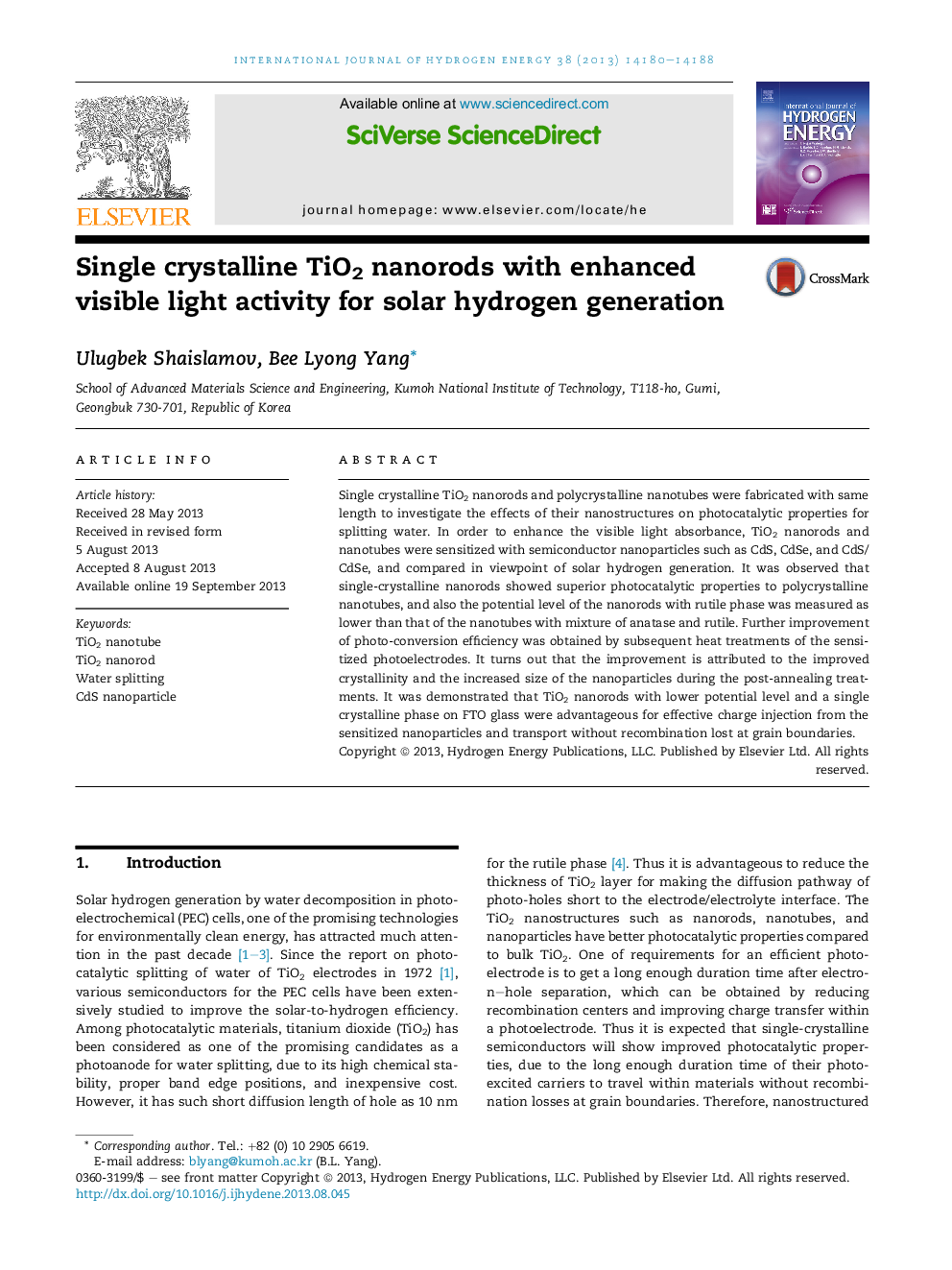| کد مقاله | کد نشریه | سال انتشار | مقاله انگلیسی | نسخه تمام متن |
|---|---|---|---|---|
| 1281377 | 1497512 | 2013 | 9 صفحه PDF | دانلود رایگان |

• Photocatalytic properties of TiO2 nanorods and nanotubes sensitized were studied.
• TiO2 single crystal nanorods show superior photocatalytic activity.
• Annealing results in size increase and improved interfaces of nanoparticles.
• We report effective charge transport and less recombination lost in the nanorods.
Single crystalline TiO2 nanorods and polycrystalline nanotubes were fabricated with same length to investigate the effects of their nanostructures on photocatalytic properties for splitting water. In order to enhance the visible light absorbance, TiO2 nanorods and nanotubes were sensitized with semiconductor nanoparticles such as CdS, CdSe, and CdS/CdSe, and compared in viewpoint of solar hydrogen generation. It was observed that single-crystalline nanorods showed superior photocatalytic properties to polycrystalline nanotubes, and also the potential level of the nanorods with rutile phase was measured as lower than that of the nanotubes with mixture of anatase and rutile. Further improvement of photo-conversion efficiency was obtained by subsequent heat treatments of the sensitized photoelectrodes. It turns out that the improvement is attributed to the improved crystallinity and the increased size of the nanoparticles during the post-annealing treatments. It was demonstrated that TiO2 nanorods with lower potential level and a single crystalline phase on FTO glass were advantageous for effective charge injection from the sensitized nanoparticles and transport without recombination lost at grain boundaries.
Figure optionsDownload as PowerPoint slide
Journal: International Journal of Hydrogen Energy - Volume 38, Issue 33, 4 November 2013, Pages 14180–14188